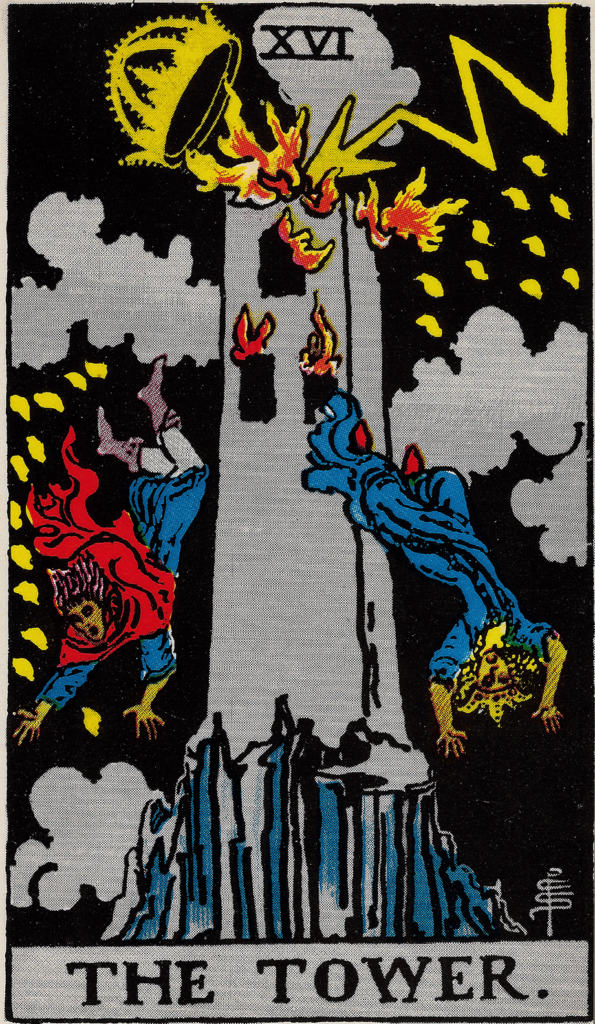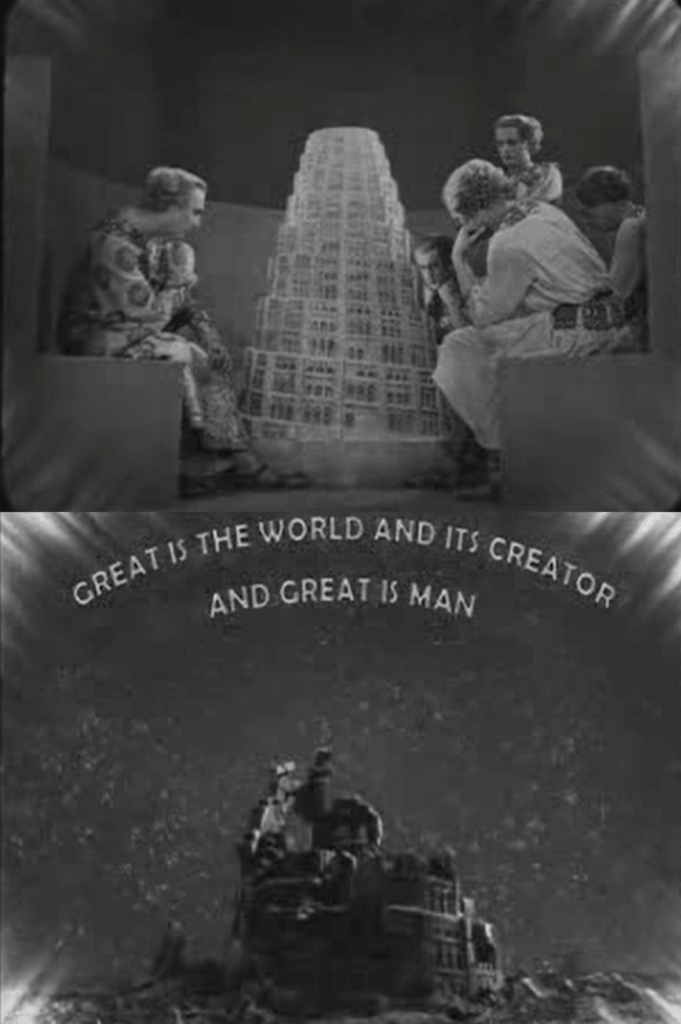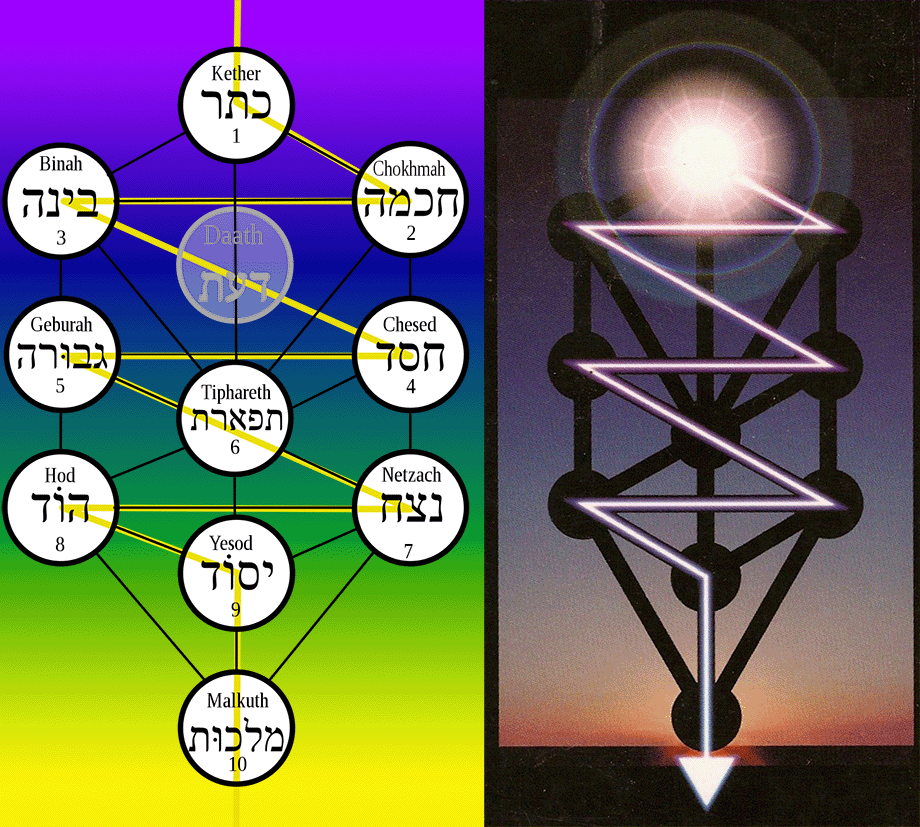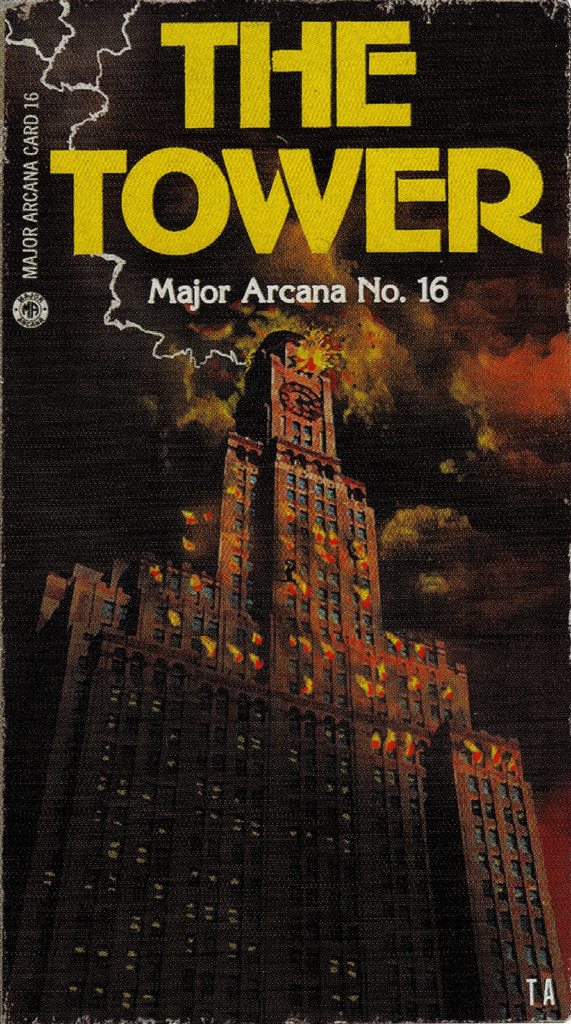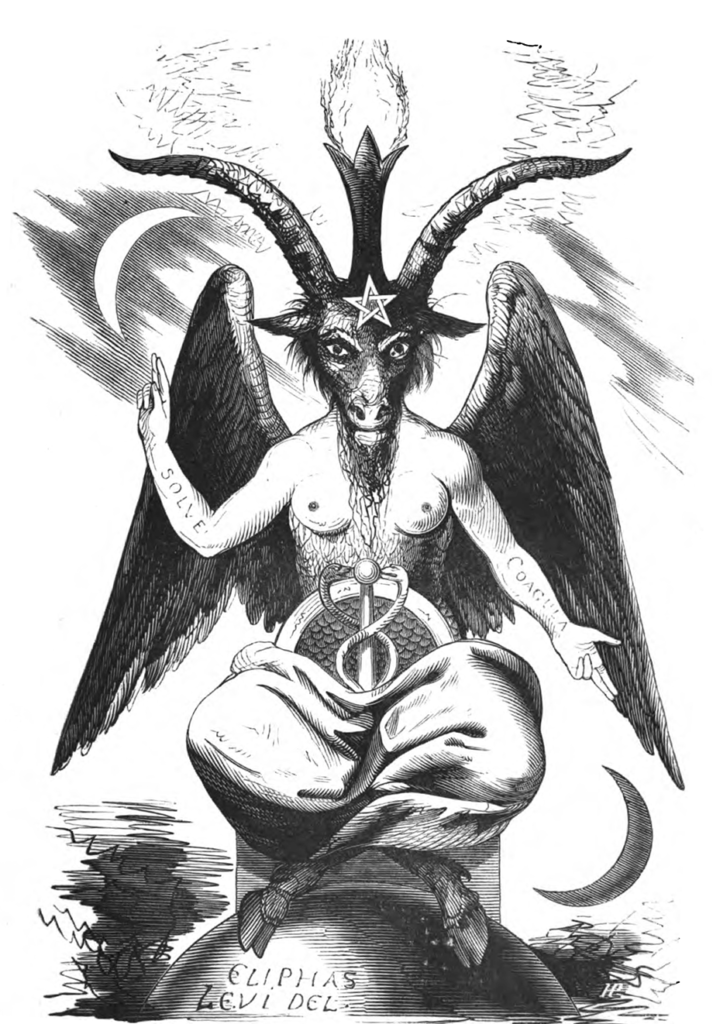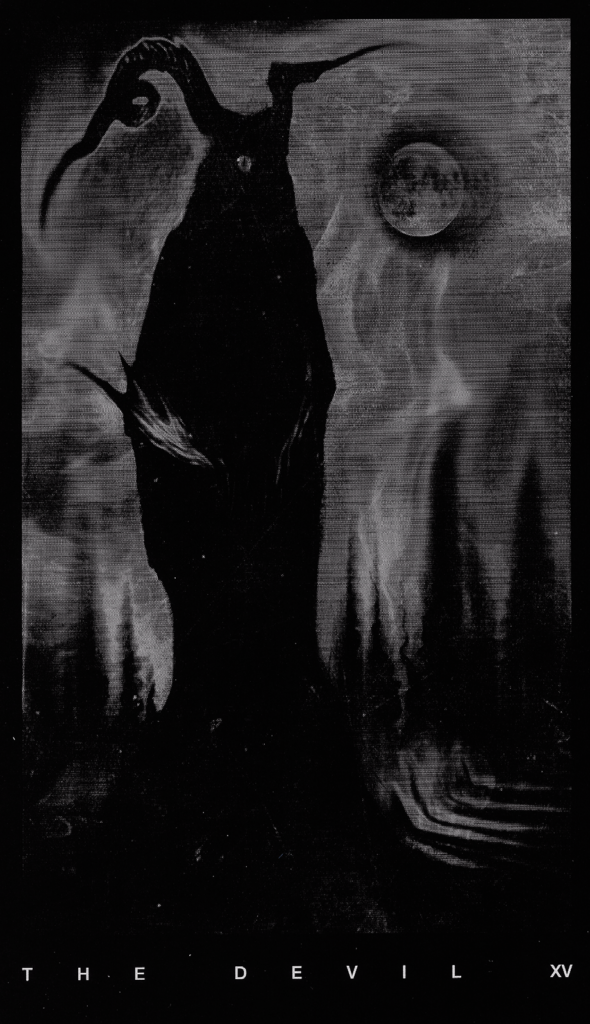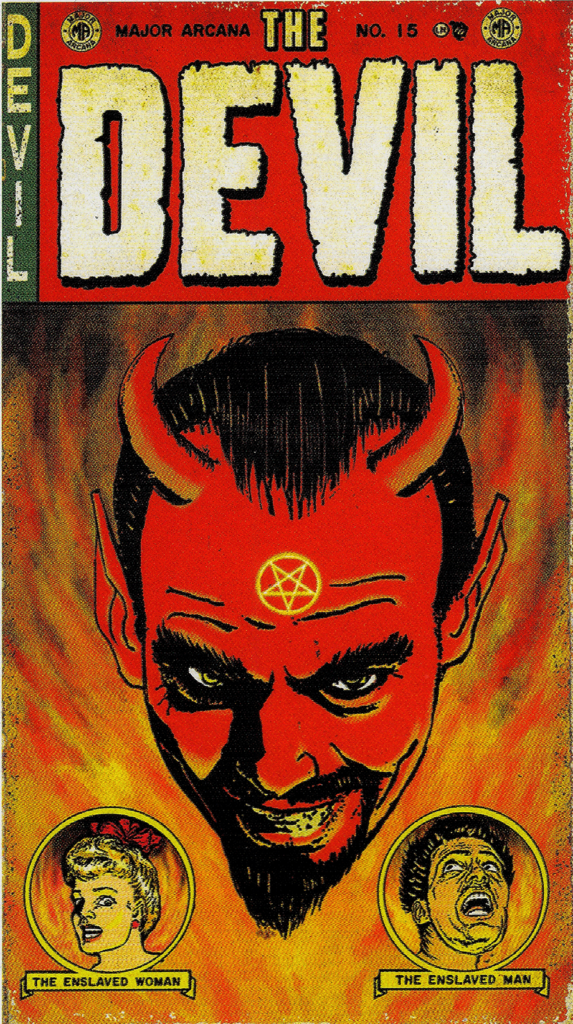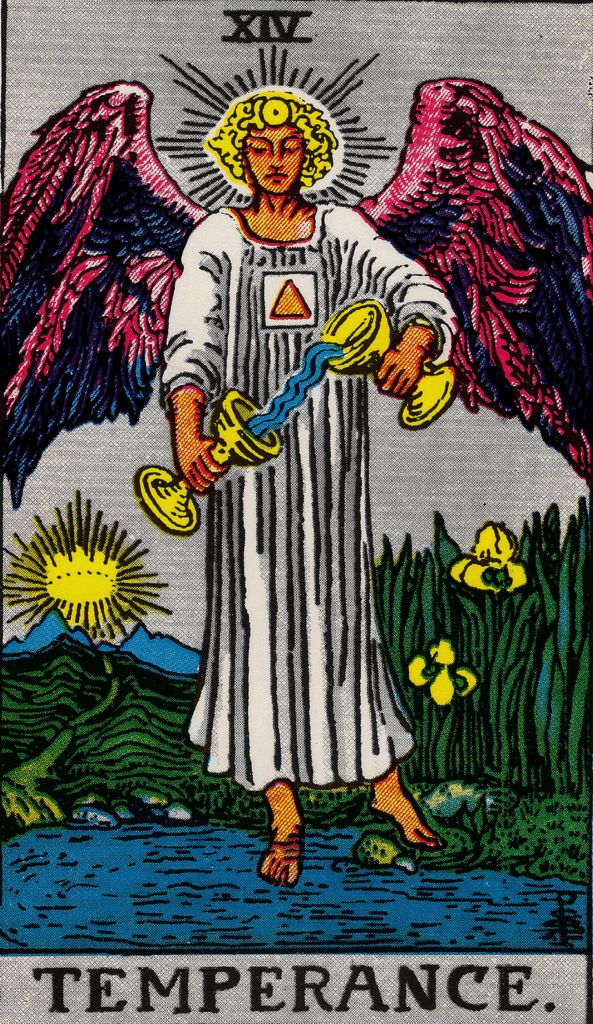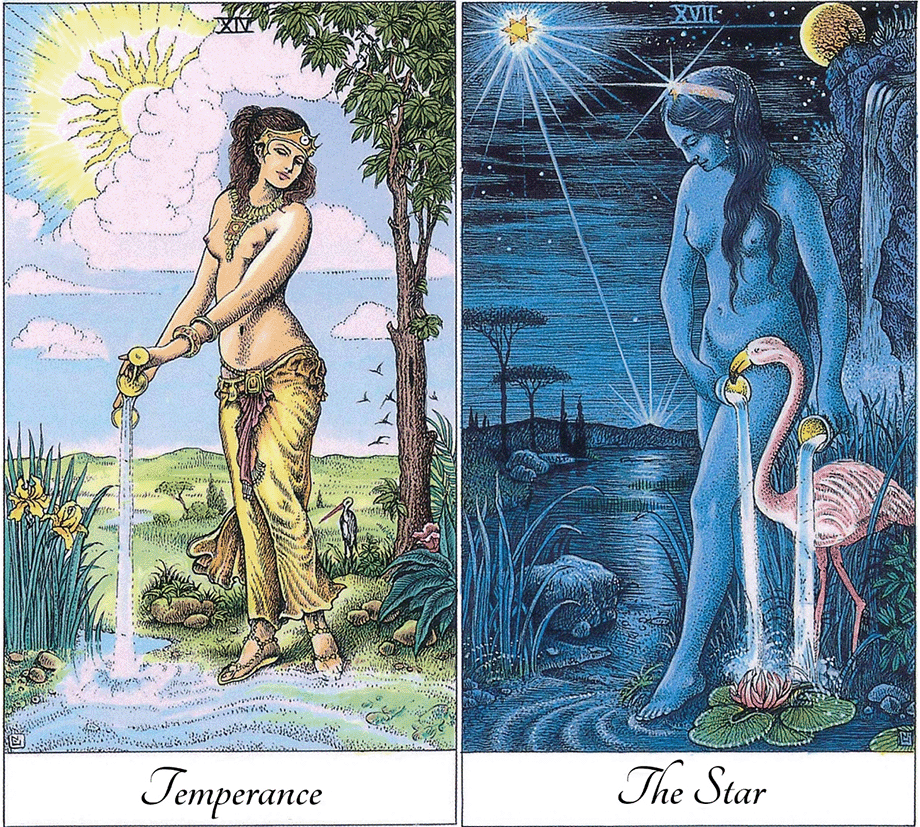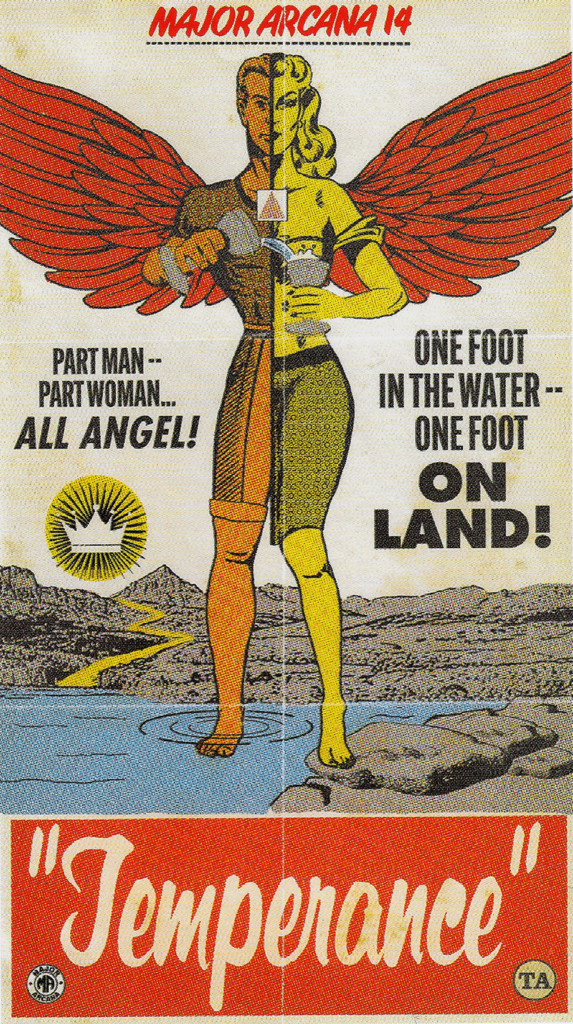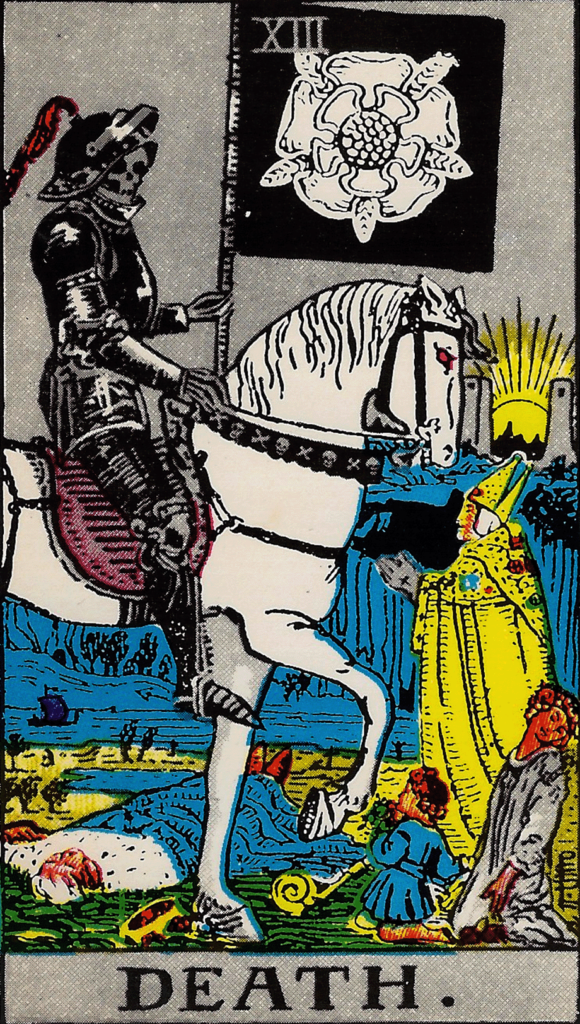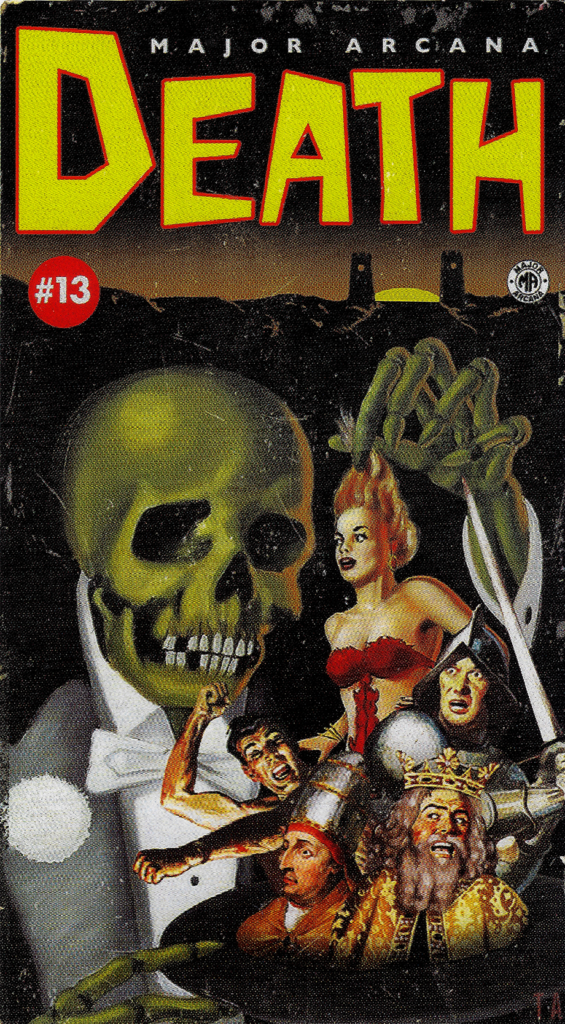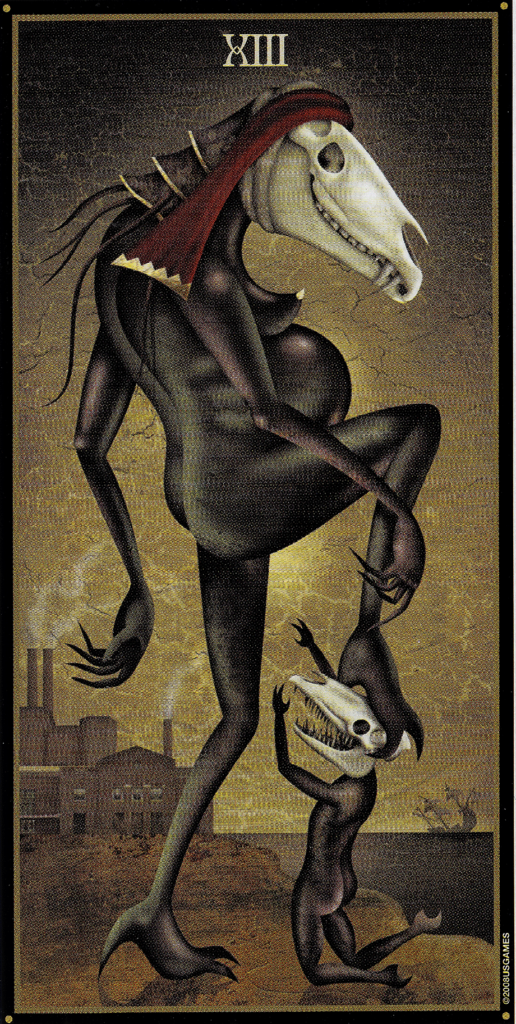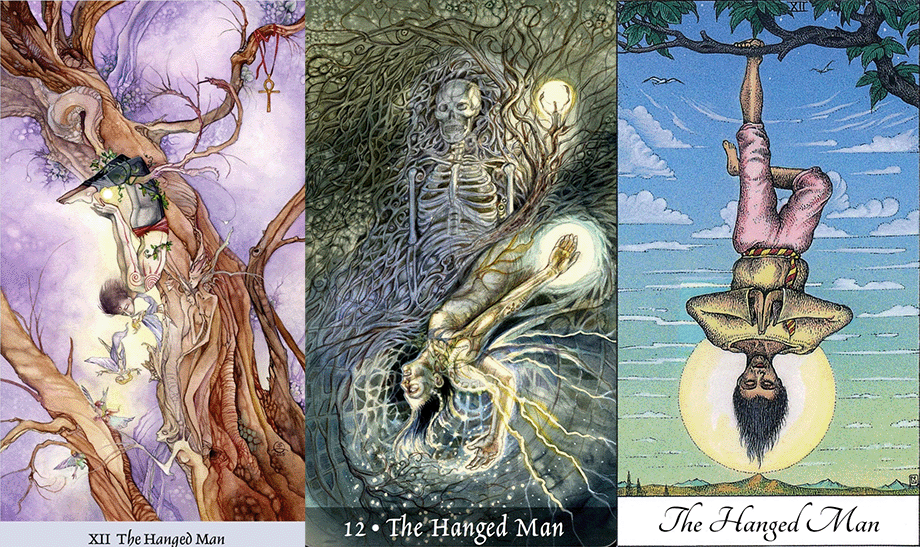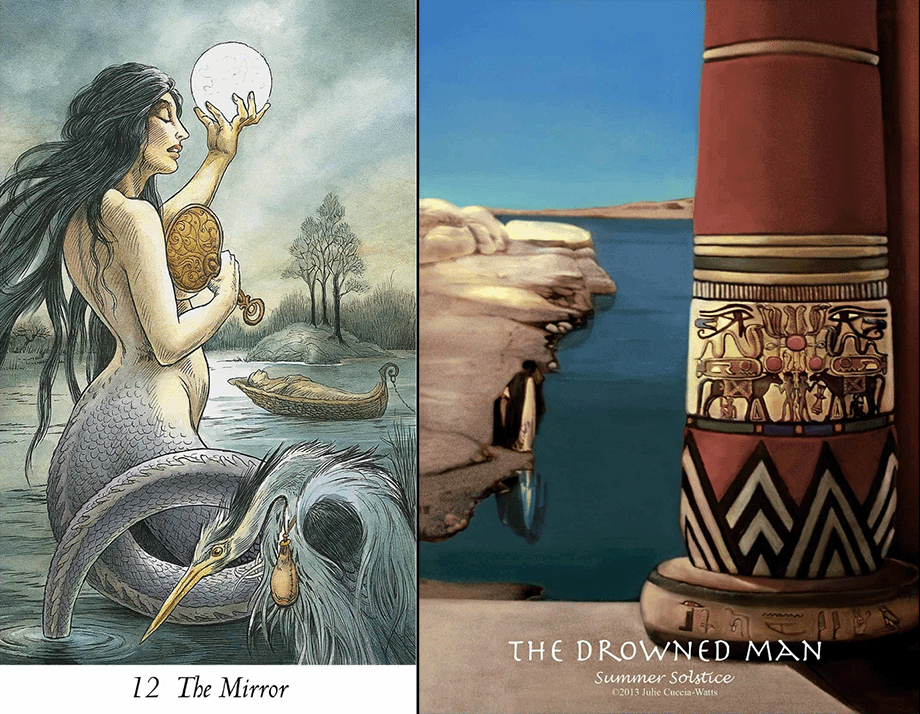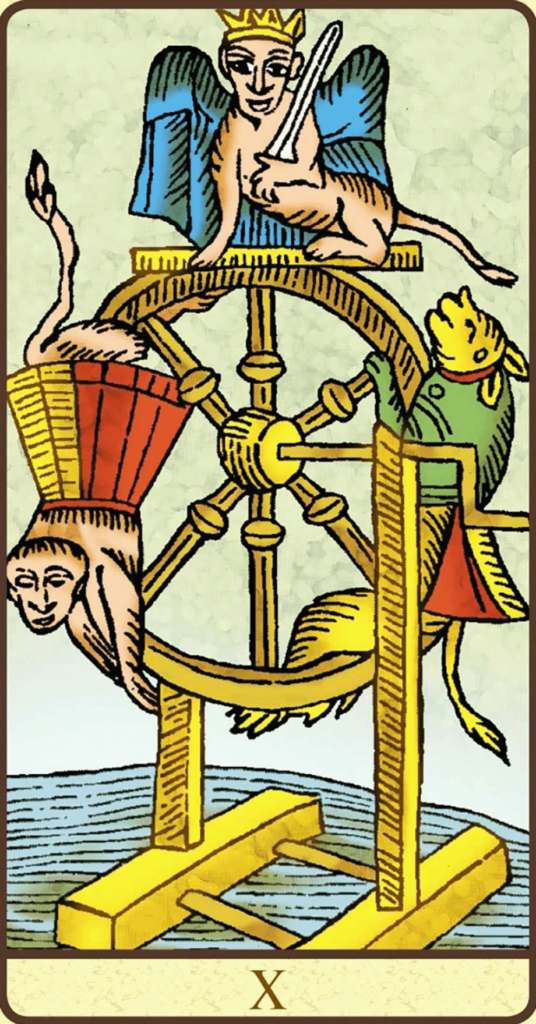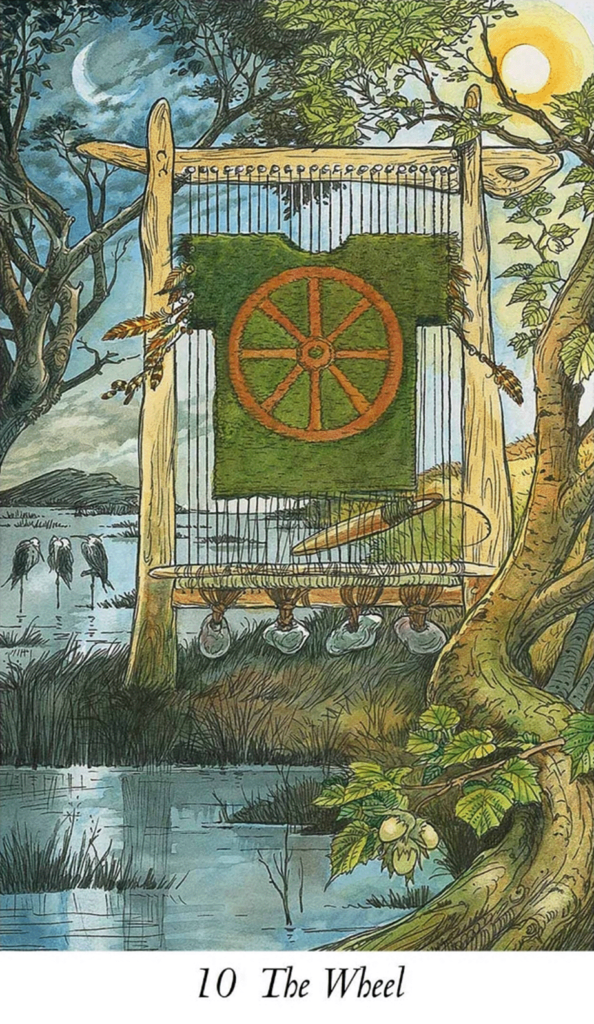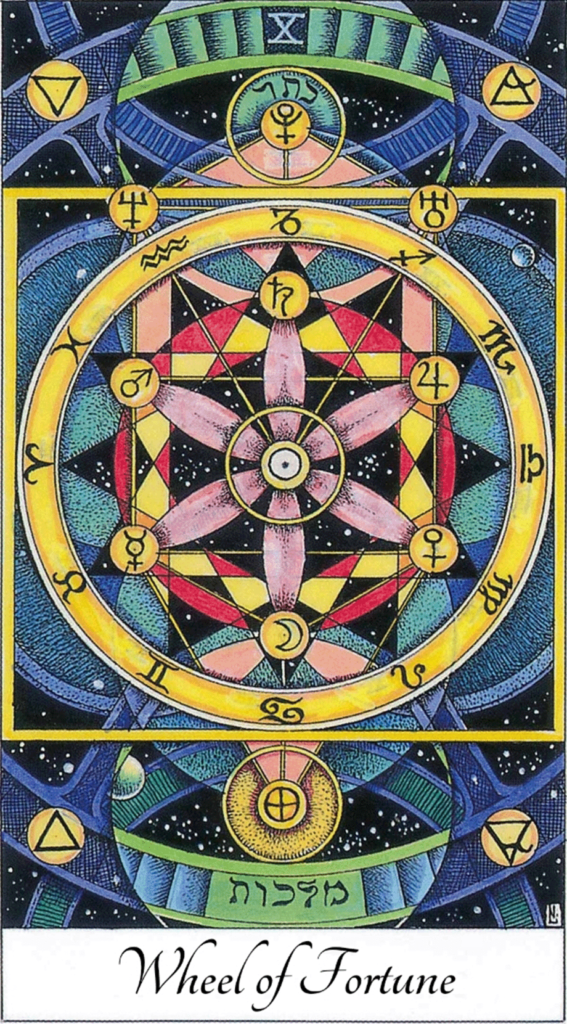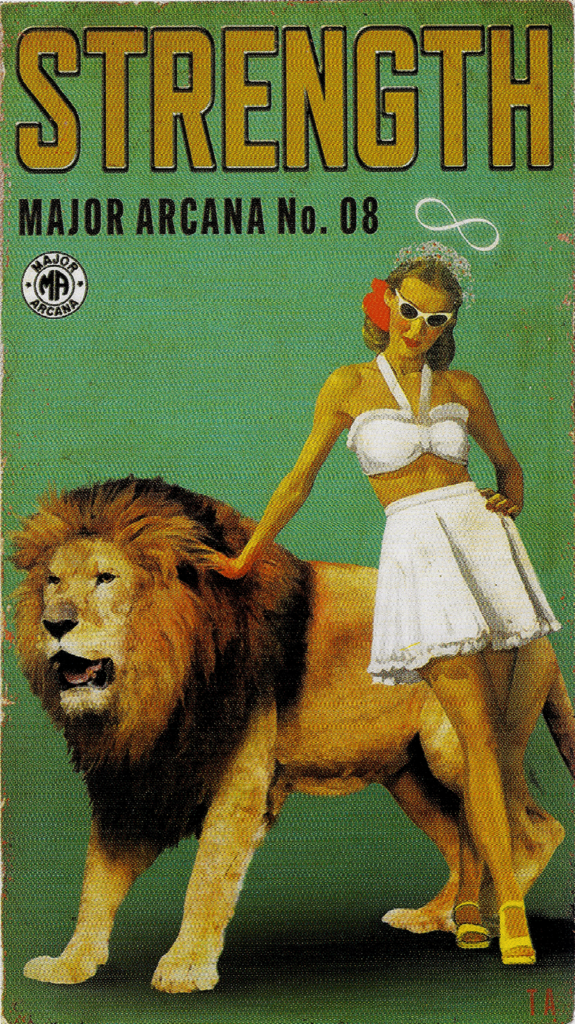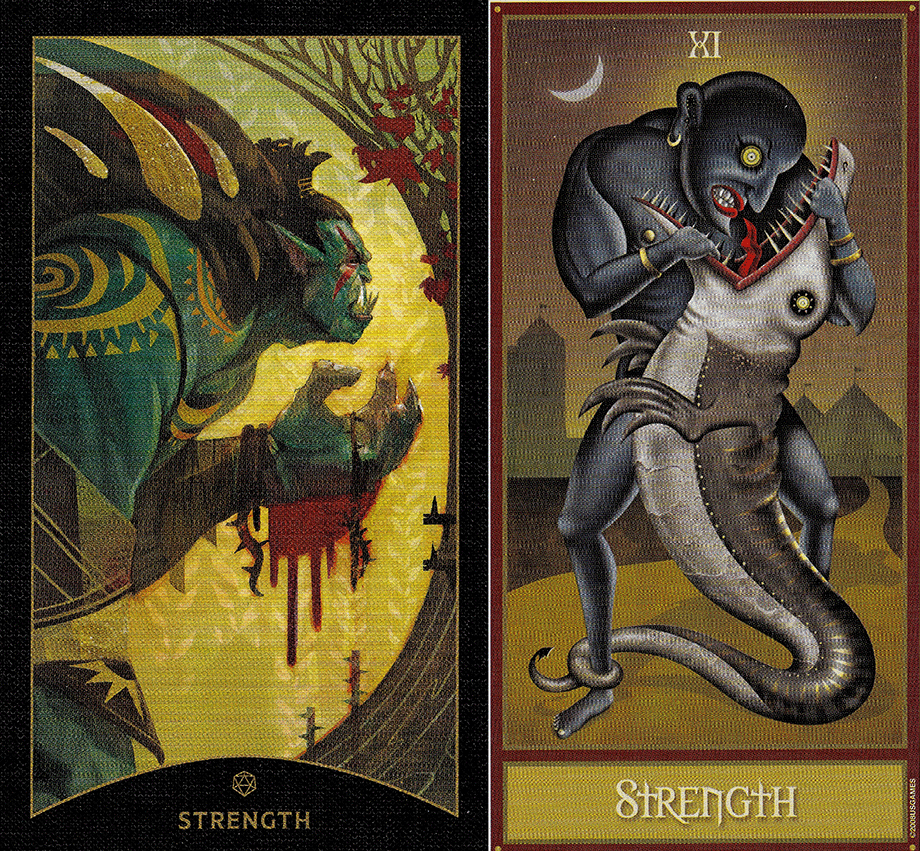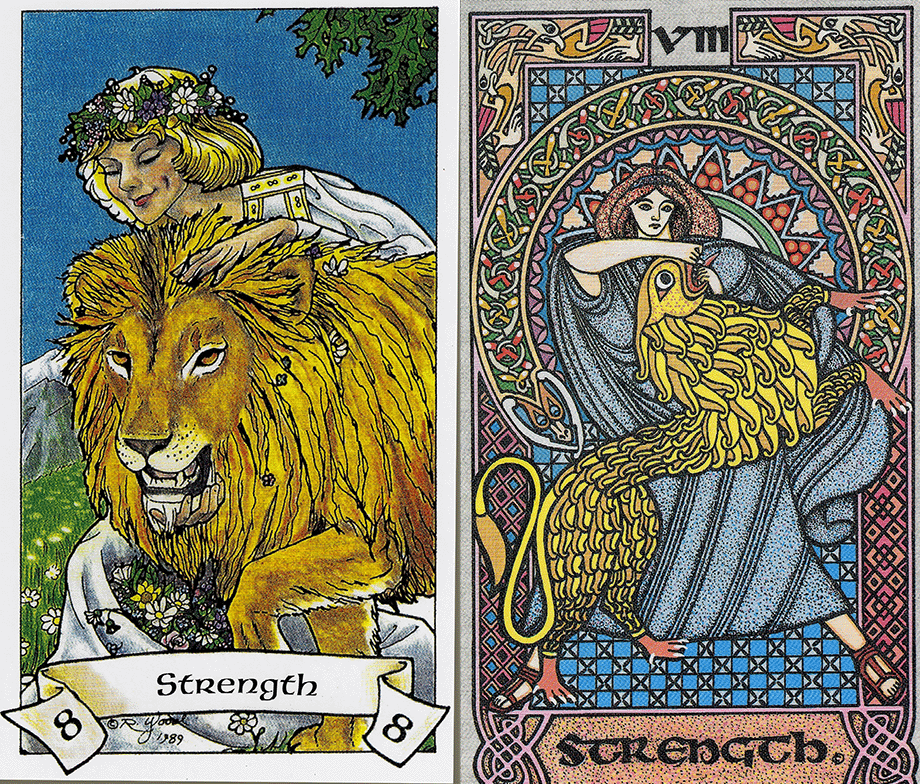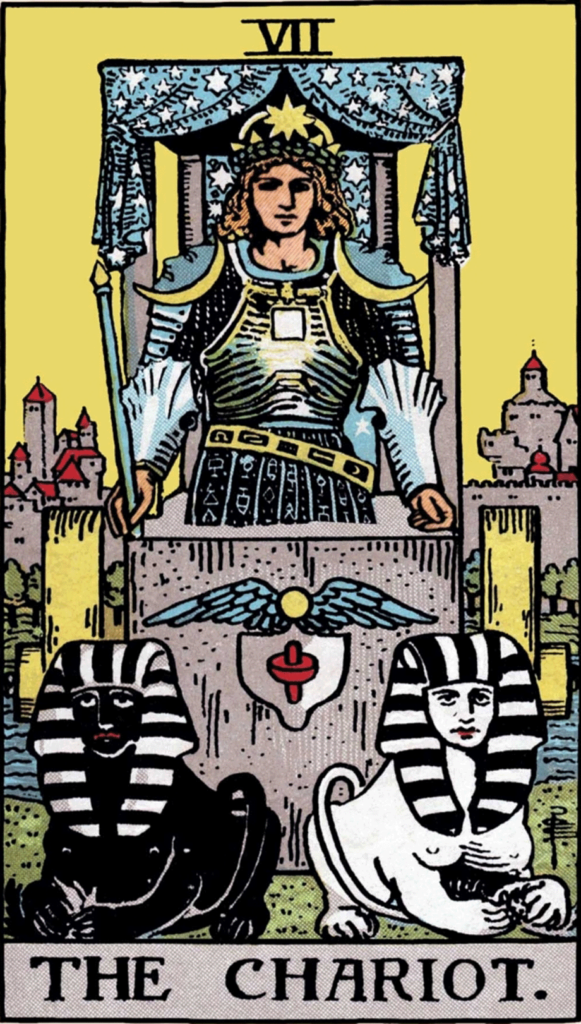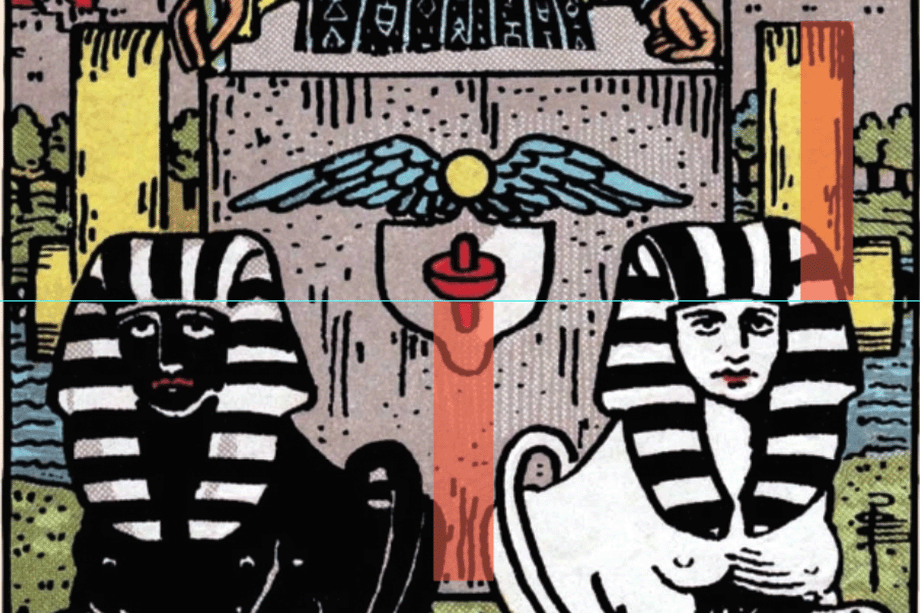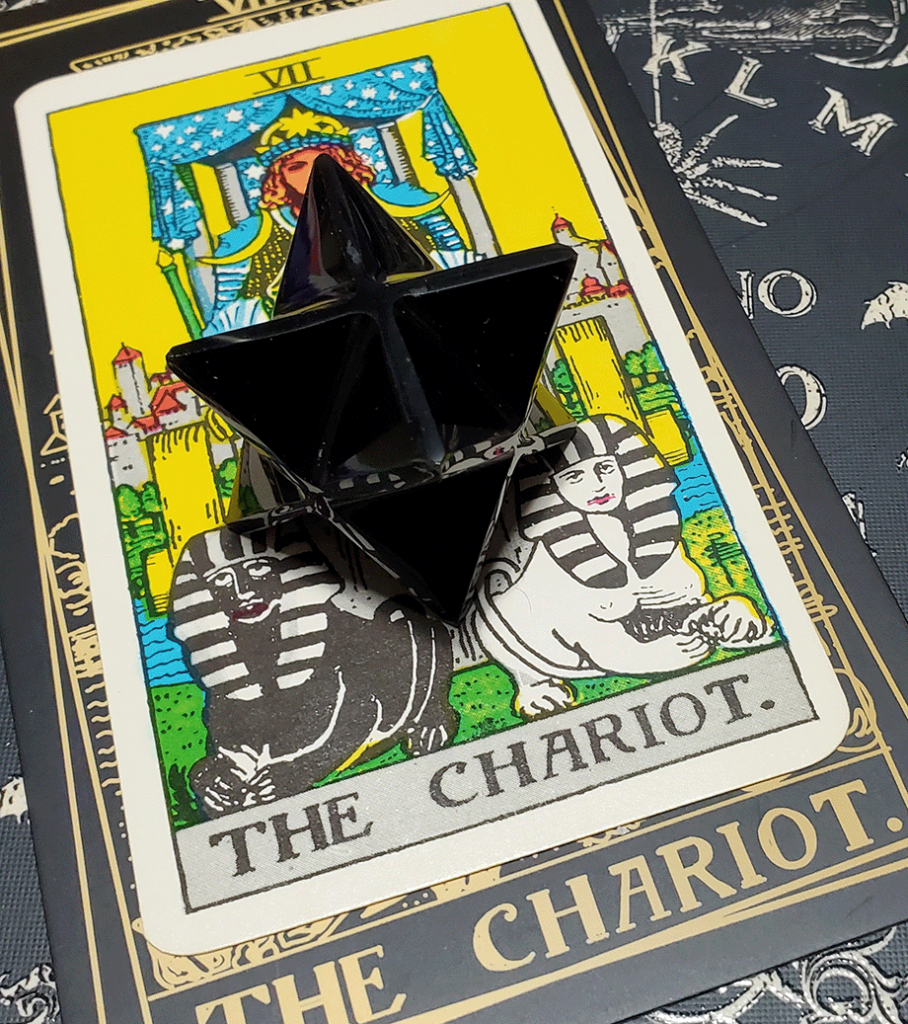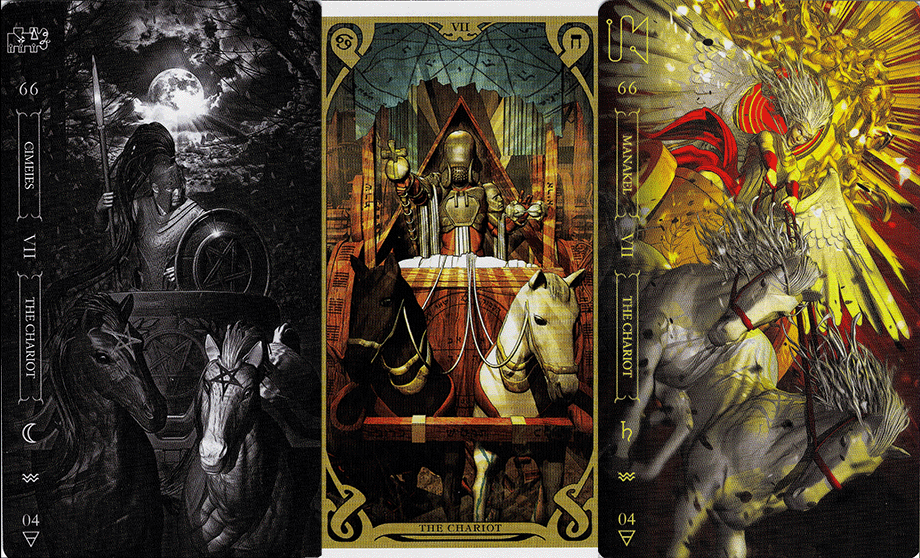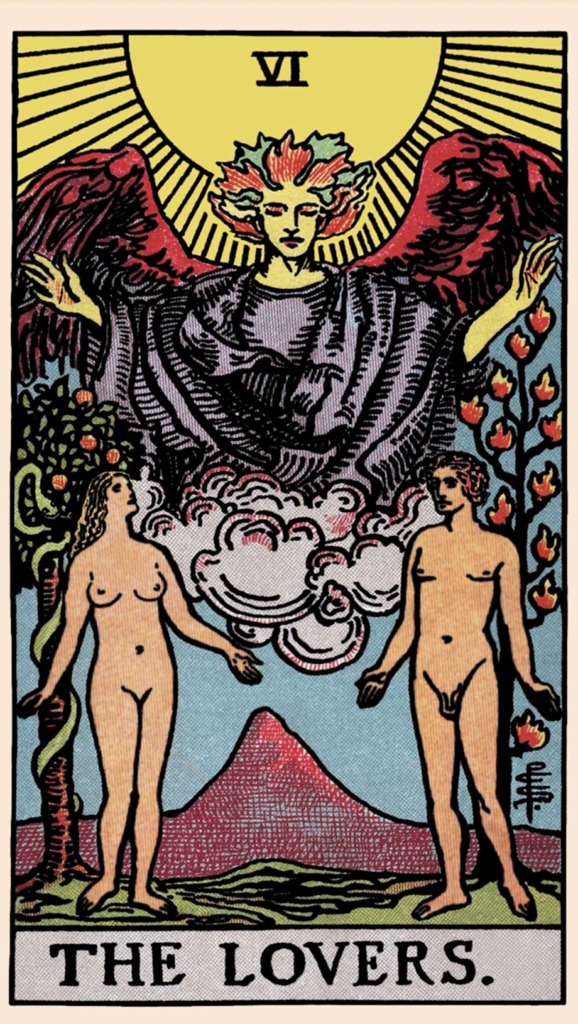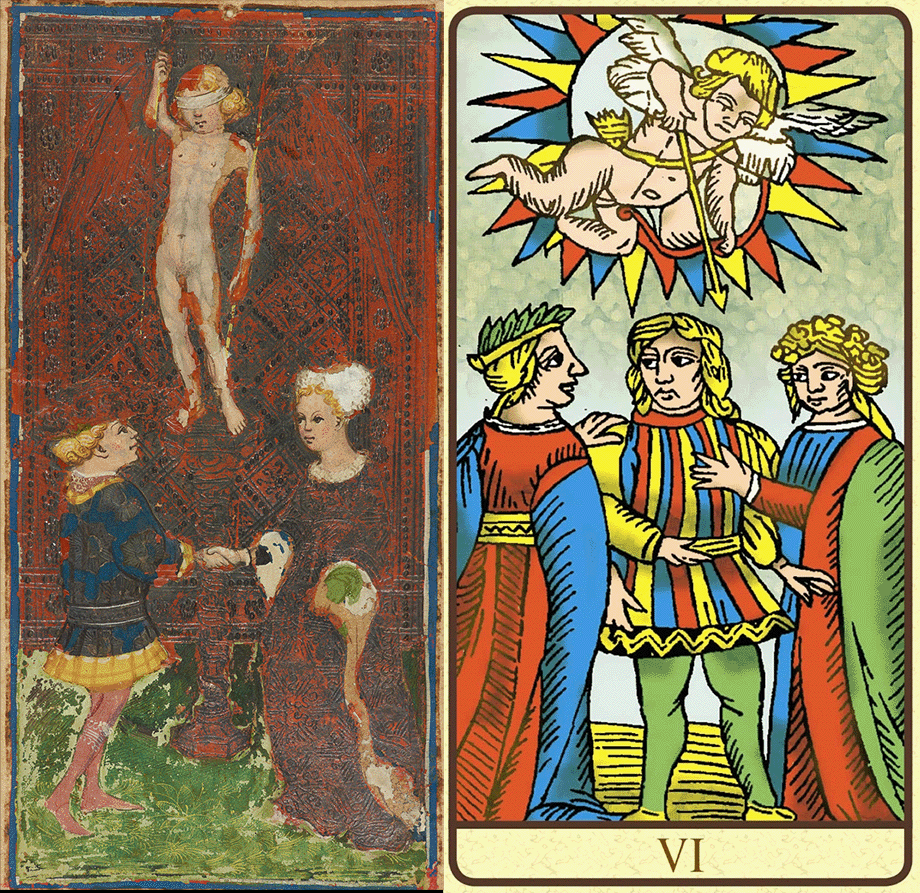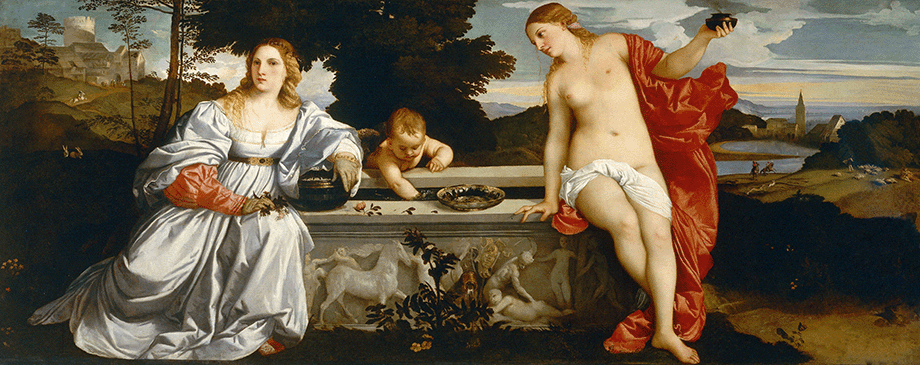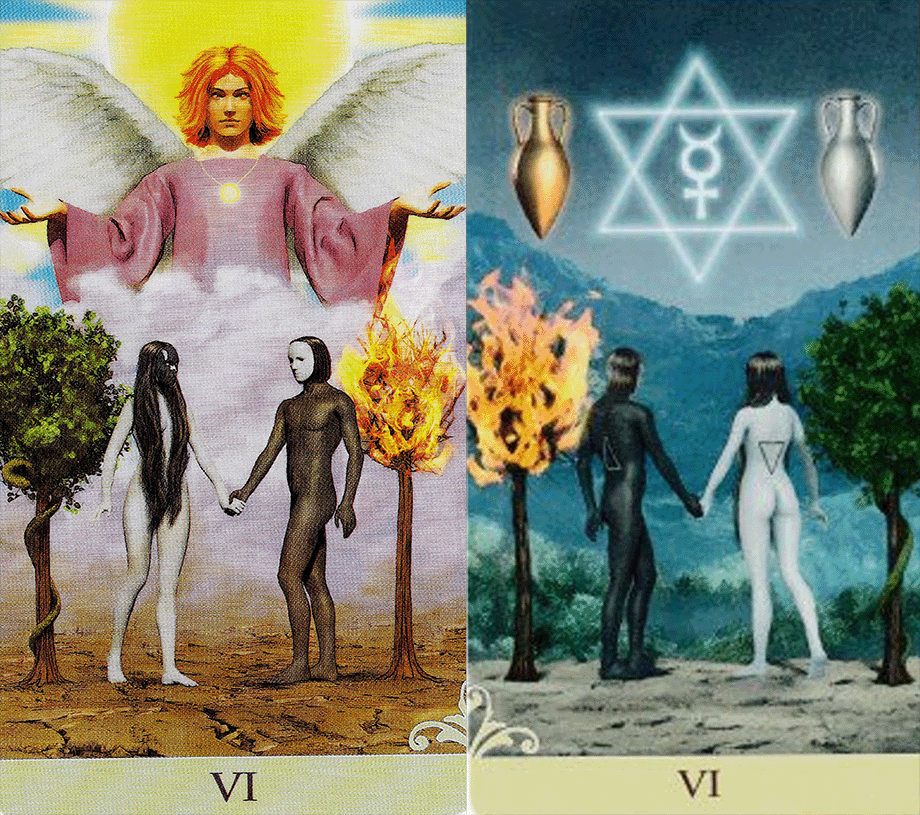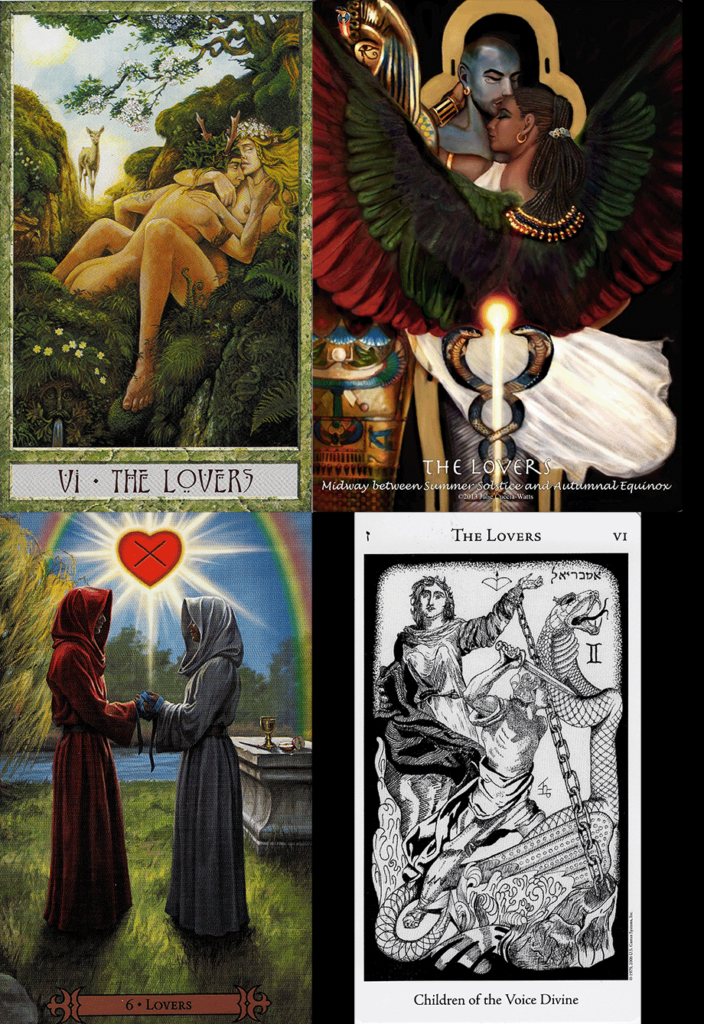I went looking for a good Shakespearean quote to open this week’s article. He has quite a few that are moon-centric, but none of them really fit with the theme of the Tarot, or my take on this card, so I suppose I shall forego the poesy in favor of just getting to it. But the Moon is oftime mistress of our inner tides, so it seems a shame not to wax a bit poetic.
This will post just after the Full Moon in Aquarius. I didn’t plan it that way, though I do have a nifty app for the moon phases so I guess I could have. Next week the Sun will post just after the apex of the Lion’s gate, so it might seem that I am far more astrologically savvy than I really am. Truth be told, I wanted to start with the Fool nearest to April Fool’s Day, and this is the way they all laid out. If there’s a correspondence to it, well, I’ve already covered that apparent coincidences may not be coincidences, but sometimes a cigar….

Without further ado, then, shall we begin our discussion of the XVIII Card- The Moon. This second of the “celestial” cards is marked by a large disk, with a number of large rays, and an equal number of small rays. Assuming that the position of the Roman numeral overlays the top rays, we have a total of sixteen of each. Within the disk is a faced crescent, and I am inclined to say this is a female face. Outside of Egypt and Mesopotamia, the Moon has almost exclusively been cast as feminine (and we have more of that gender baggage to deal with here). Below the disk are the little shapes that are identified as flame in the Tower card, so I am comfortable regarding them as flames here. Flanking the image are two flat topped towers with a single high window. Behind them, in the distance, are mountains with a single winding road going over them. The road rises in the foreground of the card, from the edge of the water. To the left side of this road or path is a baying hound. On the right is a howling wolf. In the center appearing to be about to walk onto the path is a lobster. At the water’s edge are a variety of shapes which may be meant as aquatic plants, stones, or possibly mushrooms.
We have seen this scene before. In the Death card (XIII) we can clearly see these towers at the far right of the horse’s head, atop the waterfall. The luminous body between them is most likely, in that card, meant to represent the setting sun, so we can interpolate that we are looking west into the Moon card, and that the Moon herself is lowering.
As in the Temperance card at XIV we see a winding path coming from mountains on the left, we may also infer that we are looking at the mountains from the Eastern side, and so behind the environs of the Moon card, or rather on the opposite side of the mountains where the path goes. So in a sense, this card fits between Death and Temperance, between the transformation and the alchemy. It is a gateway, a passage, and not a place in itself. This is in keeping with the constantly changing state of the Moon itself. From Full to New to Full, the lunar cycle never stands still. The sun rises and sets each day, but it is always that same round bright disk. The journey may be cyclic but the traveler is unchanged.
But the Moon alters her face with each day, as she passes through each sign of the Zodiac in rapid fashion, arising to her greatest prominence in her opposition to the sign that the sun occupies. She is moody and mysterious. She makes the tides to ebb and flow, and by popular account, causes our human tides to also run, giving rise to madness. The terms lunacy and lunatic are derived specifically from lunar, and indicate a most ancient belief that our local satellite is responsible for the ungoverned passions.
This association is highlighted by the howling wolf. The howling of the pack when it raced through the brightly lit night in pursuit of prey was terrifying to our ancestors. The wolf was a real threat to human life in many parts of Europe and American up into the late 19th Century, before hunting dropped the wild populations. But before that, the threat of the wolf, likely combined with the incidence of rabies in survivors of wolf attacks, gave rise to the legend of the werewolf. Werewolves and lunatics were not easily separated in the minds of earlier people. Violent insanity, which could have many causes, would certainly have been terrifying, and mental illness was poorly understood (some would say it still is). When we are faced even today with serial killers and cannibals whose motivations defy any reasonable or logical pattern, it’s easy to see how less educated populations, living in remote isolation, might attribute such horrors to “moon sickness”.
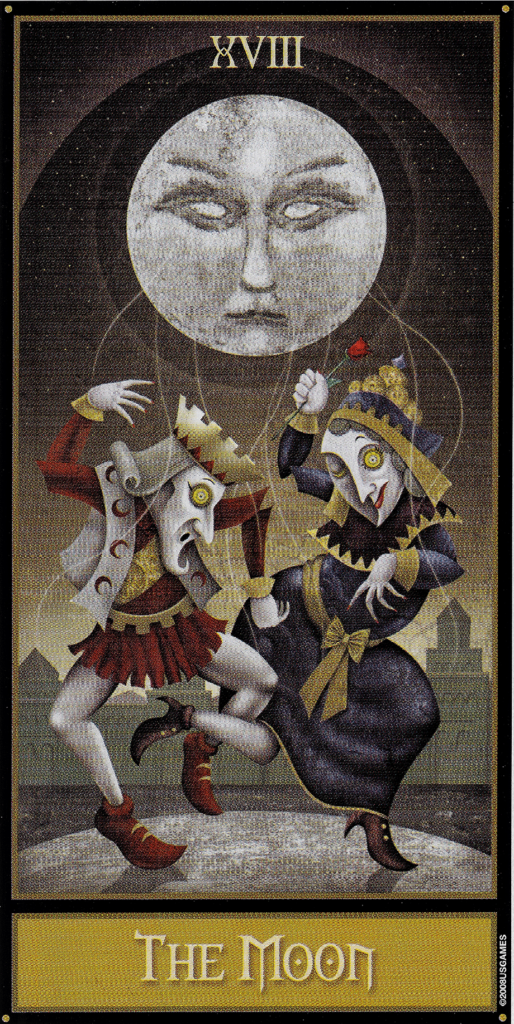
There are less horrible versions of “moon madness” of course. The phrases “mooning over” someone, or being “moon-eyed” over a desired suitor are examples of this more benevolent version of our belief in the lunar influence over our rational mind. Thus the Moon has come to symbolize our unconscious mind, the deep dark waters of our dreamlands, which stirs both the untamed beast, and his gentler, more domesticated cousin, the humble hound. The Moon governs the passions, whether they be a lust for the carnal or the martial . Since very often our drive for romance and intimacy are much interlaced with envy, jealously, and territorialism, the two are inextricably linked.
Sitting between that sunset of Death and the Resurrection of Temperance, The Moon gives us access to Hamlet’s undiscovered country. It is within sleep, that death-like state that remains a mystery, that we walk in the world of the Moon card. Are the experiences of our dreams the illusions of reality, foisted upon us by this fickle perpetually shifting orb? Or is that landscape a real place, visited again and again, as a rehearsal for the journey beyond this gateway?
It is doubtless a gateway. The two flanking towers in Smith’s version are reminiscent of the defensive architecture of a Medieval feuding Italian town. These structures we meant to survey the surrounding streets to spot an approaching gang, and to provide an easily defensible refuge for the family who built it. One wonders then, what they may be looking for upon the path between them?
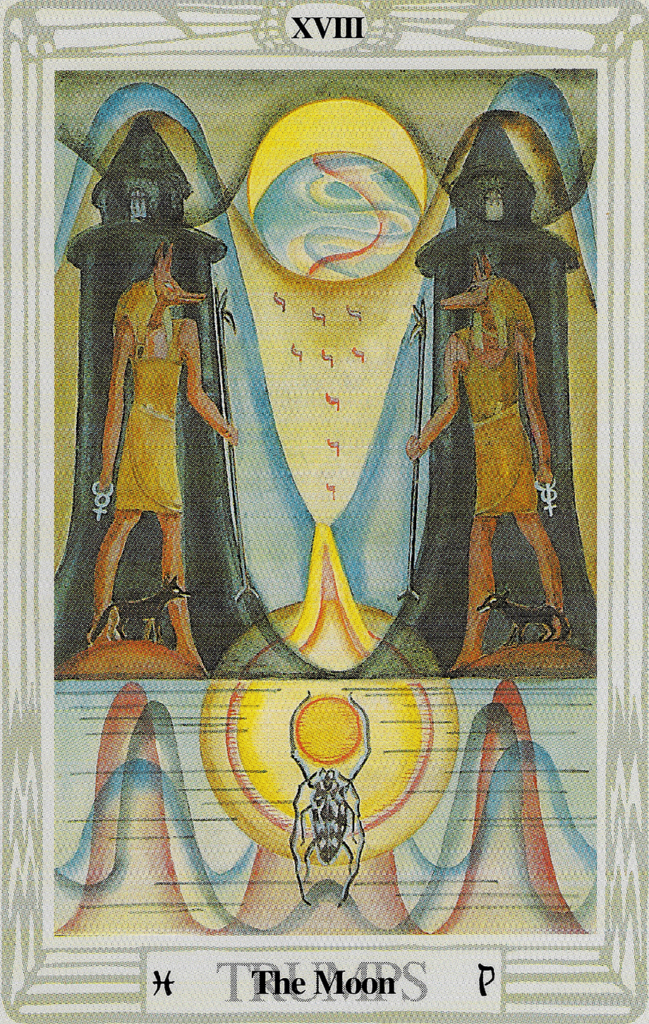
This highlights one of the characteristics of the Moon card, that it is a symbol of illusion. It is about what things appear to be rather than what they are. Witness that the beetle (which is closer to the scarab than the lobster or crab) holds a solar disk, opposite to the Moon which occupies the top of the card. The Moon appears to be the dominant source of light here, but that is because it is above the horizon. It is really only the reflection of the Sun’s light, which here has not risen yet. It is the unfortunate connection of this “lesser light” with the supposed “femininity” of the Moon that gives us the troubling gender bias inherent in much occult practice. It is not a lesser light, it is the light formed by opposite, just as the pairs in other parts o the deck must be seen as opposites but equals. The Moon is the mirror of the Sun. Therefore it reflects back the Sun in equal measure in it’s realm of influence. But because the Moons mirror is not always facing directly toward our little world, that influence is sometimes diminished.
It is not the lobster, which, by the way, is a bad Medieval rendering of a crab. The crab and lobster or crayfish interchangeably represent the Zodiac sign of Cancer, which is ruled by the Moon. The Sun rules the adjacent sign of Leo, although it is the transit of the Sun into Cancer that marks the Summer Solstice, and thus it’s greatest dominance. The Solstice is the point where the Sun appears to rise and set furthest north of the equator, due to the tilt of our planet’s axis and it’s wobble as we go about our orbit. This is thus named the Tropic of Cancer, and lies about 23.5 north latitude. From the first degree of the sign of Cancer, the planet starts to wobble back in the other direction, resulting in the Sun appearing to rise and set further and further south, until the first degree of the sign of Capricorn, which is recorded as Yule in the Wiccan Wheel of the Year.
I personally don’t think that Cancer is a lobster or a crab, originally. I think it’s a scarab beetle, and representing the Egyptian deity Khepera, The scarab was seen early on as a sign of resurrection, because of it’s curious habit of making balls of animal dung, to lay it’s eggs in. The resulting larvae were thought to miraculously appear in the balls, and thus the scarab’s process of rolling the ball became symbolic for the path of both sun and moon.
Egyptian religion is most likely a synthesis of various local pre-historic beliefs. Like the Greek myths that amalgamated gods introduced by trade, migrations, and conquest, there were multiple versions of why things happened in the universe. So the movement of the sun and moon was boats on a celestial Nile, orbs being pushed by beetles, and the eyes of a giant hawk (or hawks). These were all perfectly compatible to the Ancient Egyptians, because, the gods could be and do anything they wanted. And in a particular case, or for a particular temple, or holiday, or magic spell, one explanation might work better than another.
Crowley in his Book of Thoth makes the towers of the Moon card into the ceremonial gateway to a sacred district. In place of the hound and wolf he has given us two jackals, who most would assume to be Anubis, but to initiates are Anubis and Wapuet. Anubis guards the cemetery, the west bank of the Nile. Wapuet is called the Opener of the Way, and is probably a counterpart of the eastern shore. It’s a fair argument that these distinct beings were possibly personifications of the sunrise and the sunset, and that, by extension over the centuries, came to be metaphors for life and death. Since “Opener of the Way” sometimes occurs with a figure that is distinctly Anubis, and is involved in various rituals of the Book of the Dead, it’s also likely that over time the two beings became confounded, even to the educated priesthood. If they represent dawn and dusk, however, their position on either pylon placing the moon in center is appropriate.
Lady Frieda in designing the Thoth Moon card also gives us a beetle instead of a lobster, though it is of a rather different variety that the scarab. I can only surmise that it was a design consideration, or a miscommunication. The history of this deck is rife with spats between the author and the artist, going up to and following Crowley’s death and the subsequent publication of the cards. In any case, the arthropod in the Moon card is most definitely the astrological symbol of Cancer. and significator of the Moon as ruler of that sign. It ties also then to Water, and the other lunar affiliations. Cancer and water are both deeply interconnected with our emotional life, our moods, and our passions. This is potential one of the most astrological of the Major Arcana for this reason.
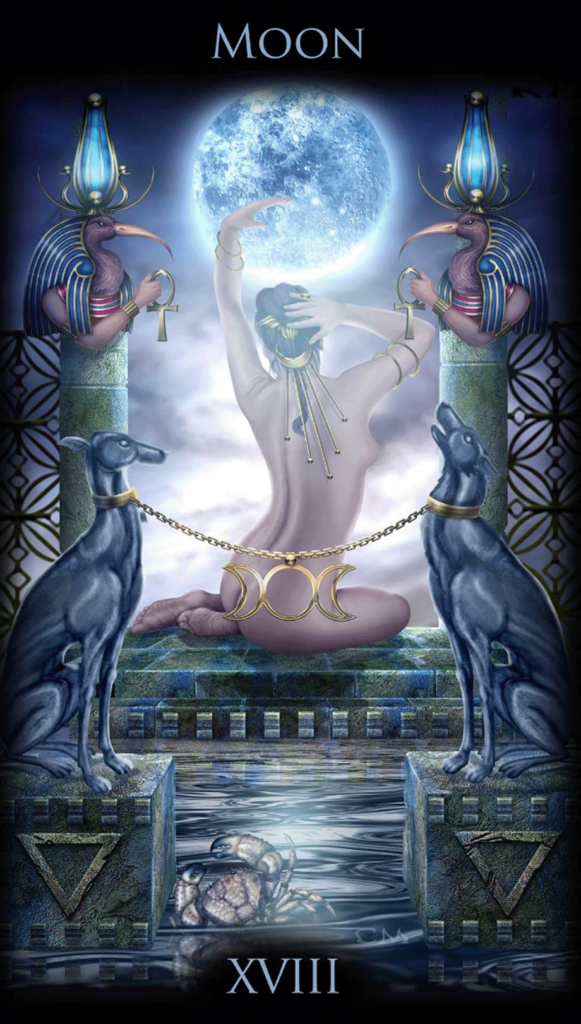
The moon is here also personified thrice. In the middle is a nude woman, reminiscent of the figure of the star. But on either side is a statue of the god Thoth. Thoth is one incarnation of the Egyptian moon god (Khons, or Khonsu is another, and there is a version where the moon is the left eye of Ra, or Horus. It’s complicated). One might argue that this is a priestess, or witch, worshipping the moon, rather than the Moon itself. That is precisely why Tarot gives us so much opportunity for expansion of the intuition. It can be all things we see, or none of them. Like the quantum wave, it is what we perceive it, and when we don’t perceive it, it isn’t.
The “flames” that come down from the Moon are a curiosity. They are a remnant of the earlier versions of the card using this symbol as metaphor for energy, or “Moon power” in the same way that the fire dropping in the Tower represents the power of the lighting bolt, and not the actual fire that is destroying the building. In the Marseilles cards, these are both represented as multi-color dots, so when Smith assayed the task of re-interpreting the cards to Waite’s instruction, the energy flows became flames, because in the early samples the same artistic convention was used. Of the Major Arcana, this only occurs here and on the Tower. In the Minor Arcana, we can find these “flames” about the hilt of the sword on the Ace of Swords, and we can find the same shapes, albeit painted blue, in the air around the Ace of Cups. In all cases we are meant to understand these as energies or emanances that come forth from a powerful dynamic source. They are the invisible energies of that source, the secret rays, that impact and alter, but are perhaps not observed save by their effect.
As I mentioned at the beginning, we are in and approaching the apex of what is called the Lion’s Gate portal by many practicioners. This is marked by the rising of the star Sirius above the horizon just prior to sunrise, and event which occurs while the Sun is in the sign of Leo. It begins a few days after the Sun departs Cancer, and a few days after the Sun reaches the midpoint of Leo. On August 8, (8/8) the sun is a the 15th degree of Leo, or about halfway. So all these layered coincidences are seen by astrologers to be significant.
Yet it is the ancient importance of this occurrence that probably is most interesting, and that is that rising of Sirius was what the Egyptians used to predict the annual Nile flood, from which the entire ceremonial, economic, and social cycle of the kingdom depended. And it is the Moon here, taking us back to Egypt and the sign of water, that links into that exaltation of the Sun next week, just before the article on the Sun card is posted.
I hope you’ll join me for that. We are now but three cards from the end of the Major Arcana.
Thank you for your continued interest.



